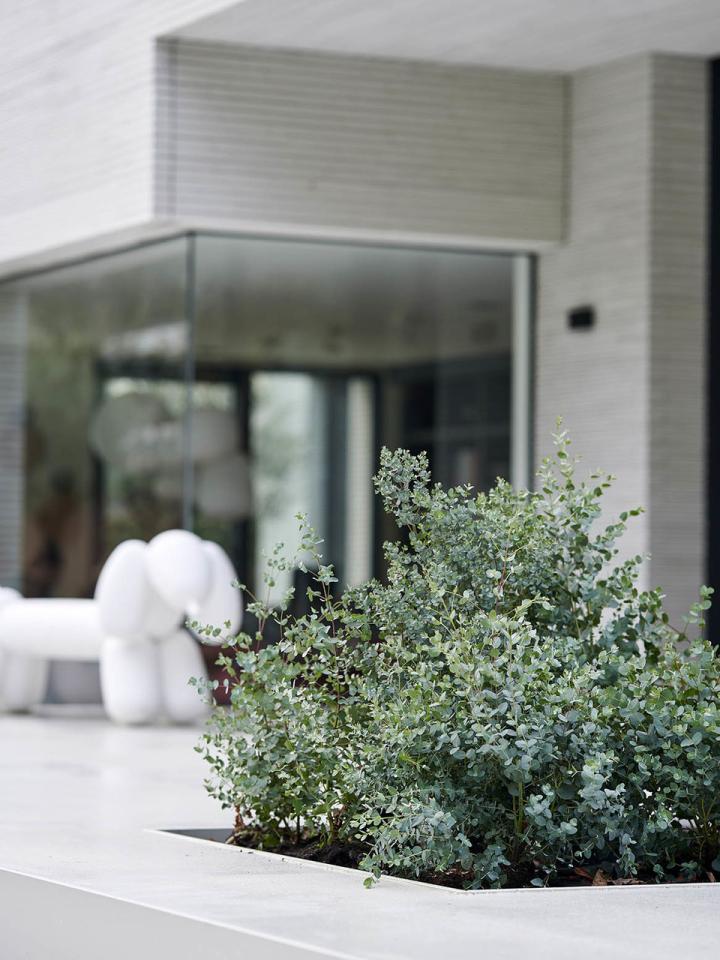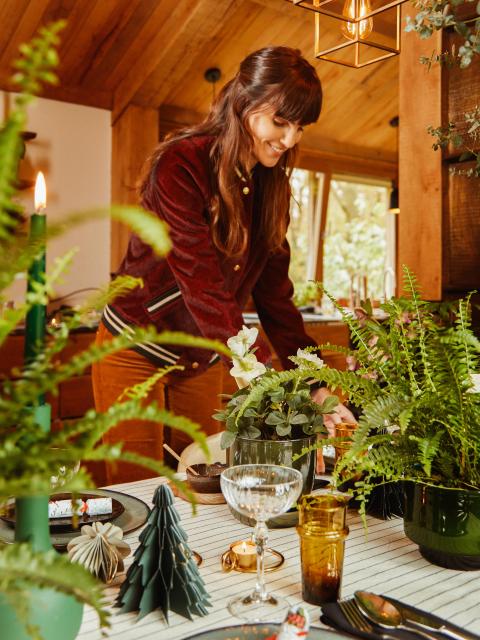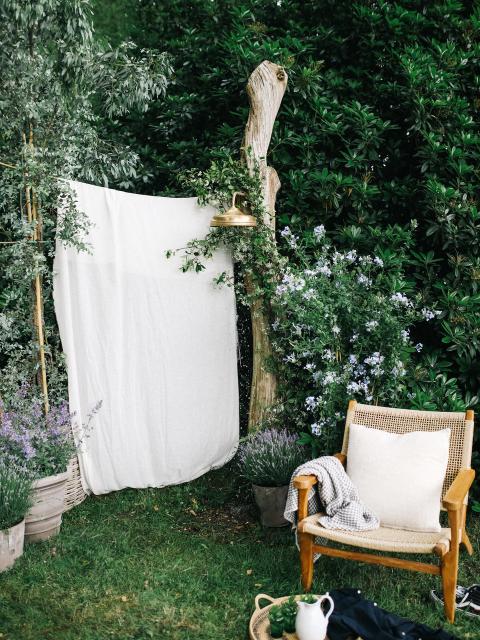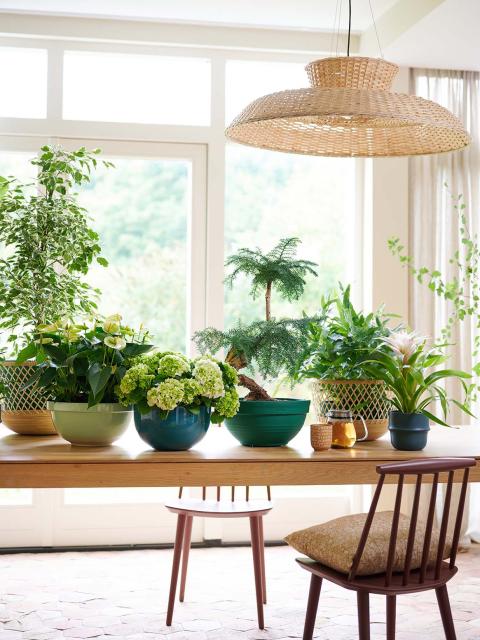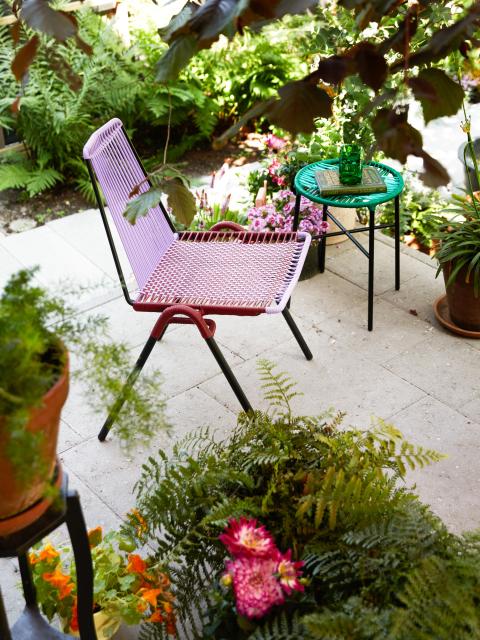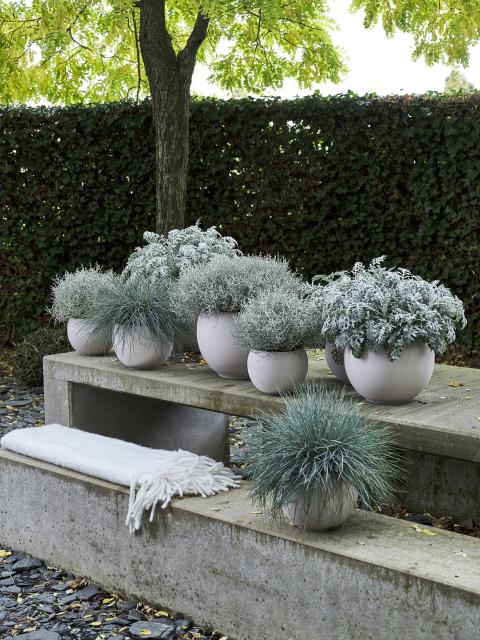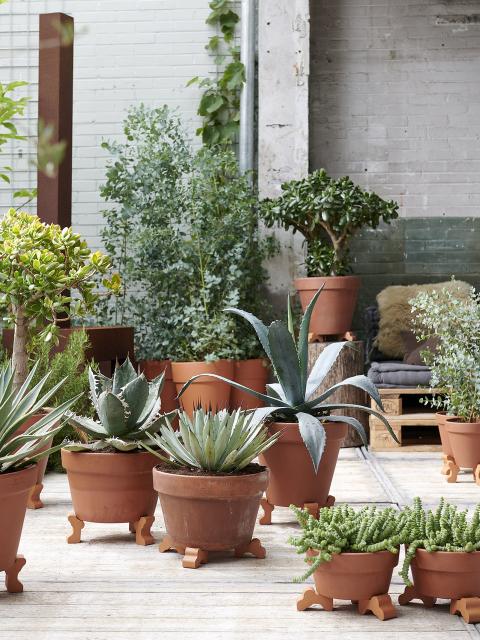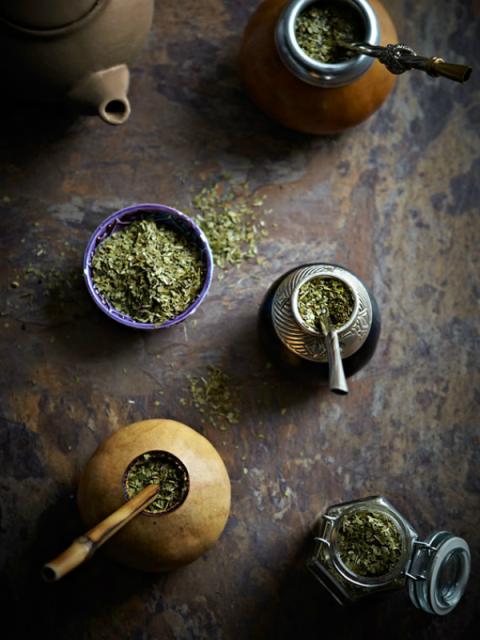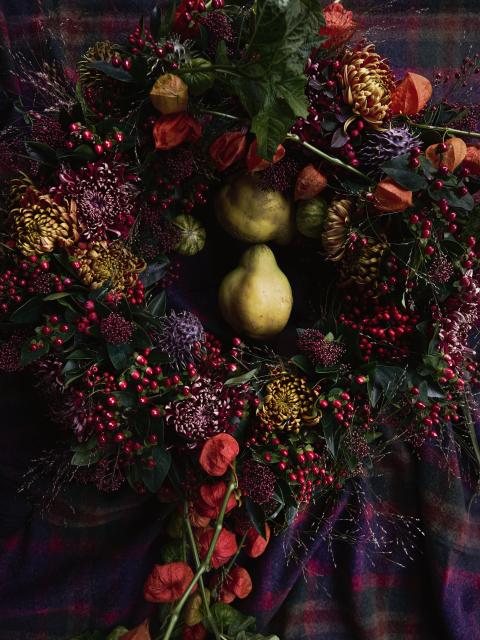Colours and shapes
There are some 700 varieties of eucalyptus and almost all of them change their leaves over the course of their life. As a young plant the eucalyptus displays round leaves, whilst the adult plant's leaves are narrow, sickle-shaped and hang down.
The eucalyptus tree grows quickly, up to 2.5 metres a year. During this rapid growth the tree sheds its soft bark, resulting in a grey and brown mottled trunk. The South Australian Eucalyptus mygdalina is the world’s tallest tree at an amazing 150 metres, but the plants won't reach heights like that as a houseplant in your home. Instead of its fast upwards growth, indoor eucalyptus stays compact and decorative, and will keep flies and mosquitoes away.
Symbolism
The eucalyptus is a holy tree for the Aboriginals. For them it represents the division of underworld, Earth and heaven. The eucalyptus leaf also has a purifying effect, as negative energy disappears in the place where you burn a eucalyptus leaf.
Some eucalyptus trees even contain gold. The roots extract the precious metal from the soil, but because it‘s toxic for the tree, it tries to get rid of it via the leaves. Scientists have found only minuscule quantities of gold in the plant, but the presence of the metal is a clear indication that there’s gold in the ground where it's growing.
Origin
There are many different species of the eucalyptus tree, which is native to Australia. The species that grow in the desert are very different from those in the rainforest, for example. The name eucalyptus comes from the Greek words ‘eu’ (beautiful) and ‘kalyptos’ (hat), because the stamens and pistils together resemble a hat.

